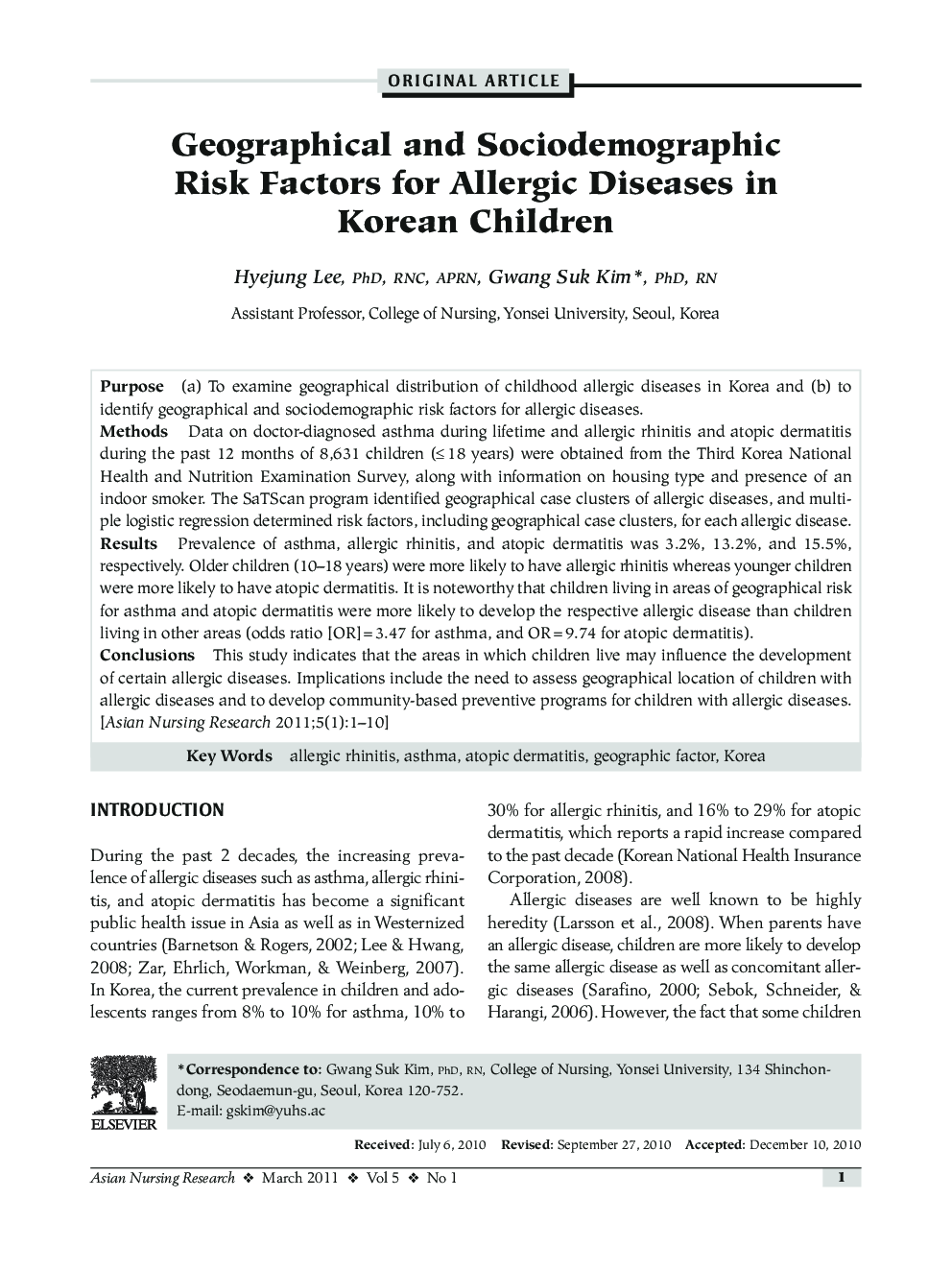| Article ID | Journal | Published Year | Pages | File Type |
|---|---|---|---|---|
| 2645242 | Asian Nursing Research | 2011 | 10 Pages |
Purpose(a) To examine geographical distribution of childhood allergic diseases in Korea and (b) to identify geographical and sociodemographic risk factors for allergic diseases.MethodsData on doctor-diagnosed asthma during lifetime and allergic rhinitis and atopic dermatitis during the past 12 months of 8,631 children (≤ 18 years) were obtained from the Third Korea National Health and Nutrition Examination Survey, along with information on housing type and presence of an indoor smoker. The SaTScan program identified geographical case clusters of allergic diseases, and multiple logistic regression determined risk factors, including geographical case clusters, for each allergic disease.ResultsPrevalence of asthma, allergic rhinitis, and atopic dermatitis was 3.2%, 13.2%, and 15.5%, respectively. Older children (10-18 years) were more likely to have allergic rhinitis whereas younger children were more likely to have atopic dermatitis. It is noteworthy that children living in areas of geographical risk for asthma and atopic dermatitis were more likely to develop the respective allergic disease than children living in other areas (odds ratio [OR] = 3.47 for asthma, and OR = 9.74 for atopic dermatitis).ConclusionsThis study indicates that the areas in which children live may influence the development of certain allergic diseases. Implications include the need to assess geographical location of children with allergic diseases and to develop community-based preventive programs for children with allergic diseases.
